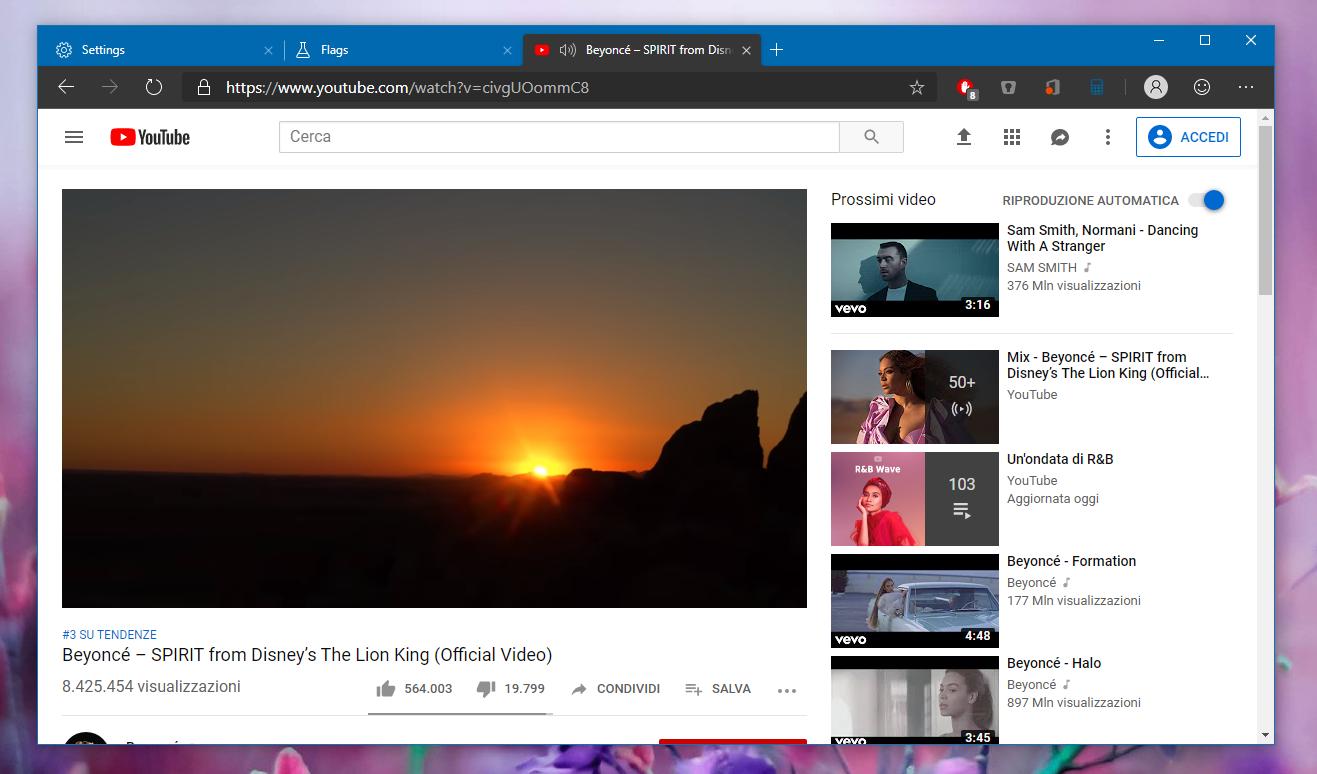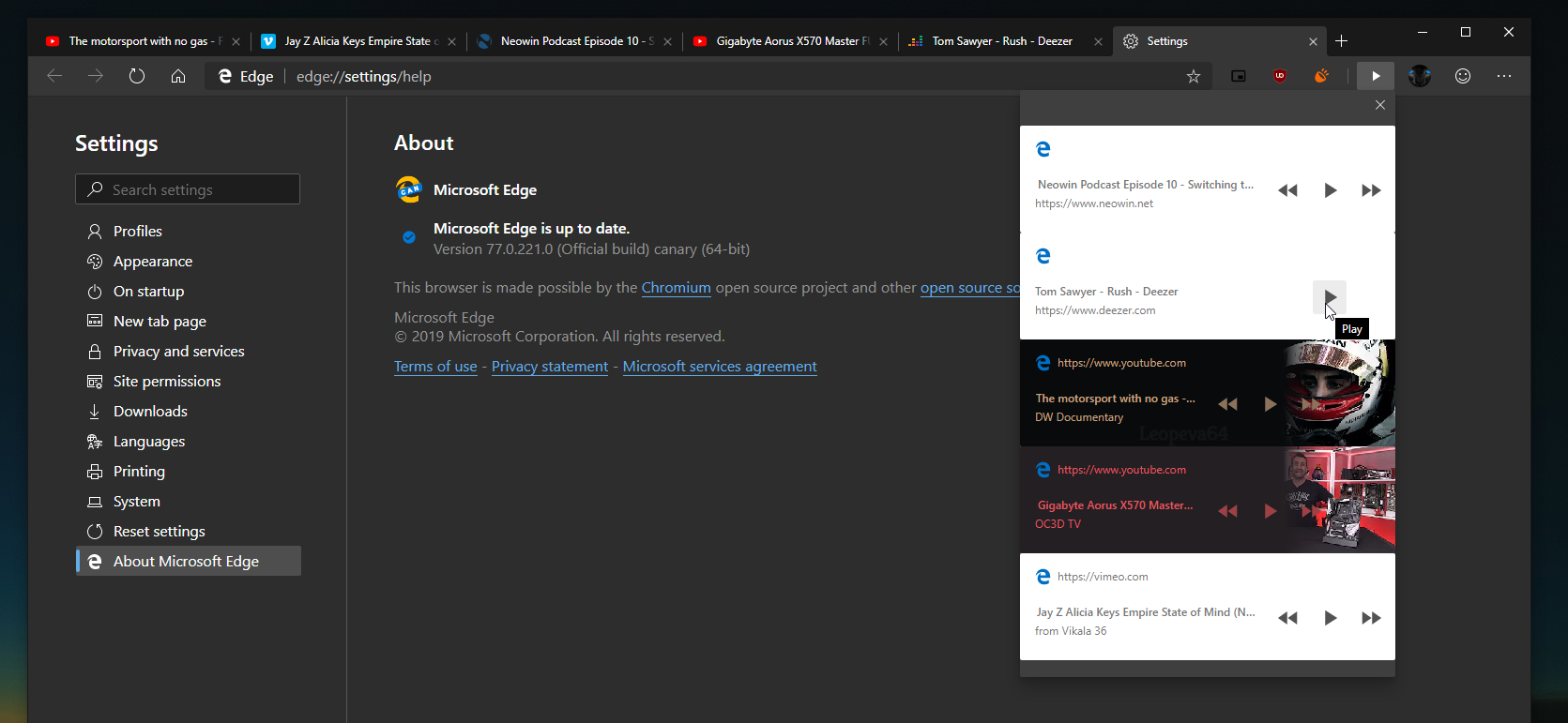THIS IS HOW MICROSOFT EDGE WILL MANAGE ALL YOUR MEDIA SESSIONS FROM ONE SCREEN || BY DEVELOPERS MINDD
THIS IS HOW MICROSOFT EDGE WILL MANAGE ALL YOUR MEDIA SESSIONS FROM ONE SCREEN || DEVELOPERS MINDD
As one of the largest contributors to the Chromium engine, Microsoft keeps coming back with improvements and new features that eventually all browsers using this platform could eventually get.
But at the same time, the software giant also works on refining Google’s idea, as this is one of the purposes of the Chromium project: work together on the same features for the benefit of everyone.
More recently, Google implemented a new media control key that sits in the toolbar within your browser, making playback controlling a much easier process.
The active session was thus displayed in a simplified UI, technically allowing you to play and pause the playback, skip to the next song or to the previous one with just a couple of clicks and without touching the media keys on your keyboard.
Needless to say, Microsoft is interested in this idea as well, only that the software giant wants to do the whole thing a little bit different and actually give it a much better purpose.
As discussed here on reddit, Microsoft’s implementation is called global media controls, and this involves controlling not just one session, but all media playback sessions in your browser.
In other words, if you’re watching a YouTube video, listening to music, and anything else that involves video or audio content, clicking this button in the toolbar will let you control them all.
The way this screen was developed makes everything pretty easy.
As you can see in the screenshot here, courtesy of user Leopeva64 on reddit, the menu will display all active media sessions and let you play and pause, go forward and backwards.
Microsoft has also submitted a commit to detail the work on this idea:
“Show a list of all media sessions instead of just the active one. This CL updates the global media controls UI to show all media sessions instead of just the most recently active media session.”
The existing implementation of this feature works pretty smoothly in Microsoft Edge, so it looks like Microsoft has also managed to fix the issues that we discovered in the early version in Google Chrome.
As I told you in my tutorial linked above, the session media controller in Google Chrome didn’t work exactly as expected, and it often crashed the browser whenever some input was provided. Restarting the browser didn’t make any difference, so it was better to keep it disabled until Google refined it a little bit more.
In Microsoft Edge, on the other hand, everything seems to be working like a charm, which means that it could make its way to testing builds shortly.
Microsoft Edge is still in a preview stage for the time being, so this new feature is expected to receive many other refinements by the time it gets the go-ahead for everyone.
There is no ETA as to when this is projected to happen, but Microsoft clearly takes its time to improve the browser, and this can only be a good thing given that the company needs a competitor for Google Chrome and Mozilla Firefox.
Judging from the existing evidence, Microsoft Edge could replace the existing version in Windows 10 by the time the 20H1 feature update ships, which according to the typical release schedule, should happen in the spring of the next year. In other words, Microsoft still has more than six months to complete its work on the browser and bring it to all platforms.
As a reminder, the Linux version is yet to be confirmed, but sooner or later, it should receive the go-ahead given the cross-platform availability of Chromium.
Follow for daily updates and more information:-
- Facebook Page :- https://www.facebook.com/Developer-Mind-2388542071226328/
- Instagram :- https://www.instagram.com/developer_hackers/
- Twitter :- https://twitter.com/AyushBarapatre
- Pinterrest :- https://in.pinterest.com/ayushbarapatre



Comments
Post a Comment